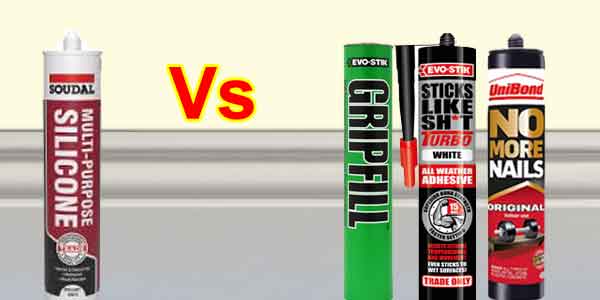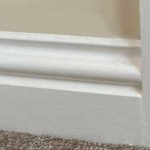Silicone is usually considered as a sealant, but it does have quite good bonding strength when used as an adhesive. If you have a spare tube in your toolbox, you may wonder is silicone will stick things, like skirting boards for example.
The simple answer is yes, silicone will stick skirting boards in most instances. However, it would not be most people’s first choice of adhesive. Traditionally, silicone is used as a sealant and there are definitely better adhesive products on the market.
Ideally, if you are going to use silicone, it would be better paired with mechanical fixings, such as screws or pins. If you use it alone, there is a small chance it could come away from the surface without the aid of other fixings.
What is the best way to fix skirting boards?

There are several ways to fix skirting boards and the method you choose will depend on several factors. These include: the surface you are fixing too, the tools you have at your disposal, and the finish that is required.
Firstly, we will look at the surface and the tools. In the majority of domestic settings, walls will consist of either solid masonry, or timber stud work. Each of these will need a slightly different approach to fixing your skirting boards.
Fixing to studwork
Stud work is going to be the easiest, as you can fix straight into the timber. Each stud will usually be spaced at 400mm centres. So, finding them and fixing should be very easy. To find the studs just use something like a bradawl, or a screw and penetrate the plasterboard. Make sure to do this in an area that will be hidden by the skirting.
Once you find the studs, fixing can be done with screws or a finishing nail gun. Obviously, the latter is a tool that not everyone will have access too, but it does make the job much quicker, and easier.
Whether you are screwing or nailing, you should also use an adhesive on the back of your skirting boards. Usually, this will be some kind of grab adhesive. However, for studwork, even if you are using a pin gun, silicone would be perfectly acceptable in my opinion.
Fixing to solid walls
When it comes to attaching skirting to a solid wall, the technique will be slightly different. This is especially true if you are screwing, as you will need to drill the masonry, to add plugs to fix your screws into.
Because the screws are getting such a good fixing to the wall, the adhesive you use is not as important. In this scenario silicone will be completely acceptable.
A pin gun can also be used to fix into solid walls. Generally, the wall will have a backing coat and skim on its surface. This surface can usually be fixed into, but you may need to use shorter brads/nails (maybe 38mm). This will mean the nail goes through the skirting, and into the plaster and backing plaster. Longer nails have a habit of hitting the hard surface below and curling back through the face of the boards.
When using nails in a surface like this, the fixing is not as strong as into wood. Therefore, you would be better using a stronger grab adhesive. Silicone will probably be fine and do the job, but it won’t give you the best fixing.
Can you fix skirting boards with just silicone?
There are certain situations, where you may not want to use mechanical fixings at all. For example, if the skirtings are wood, and you plan to finish them with a stain or varnish, filling big screw holes is more of an issue. There are ways to do it, but it is more difficult to achieve a seamless finish.
Even pin holes need filling and whilst this is easier, you will still usually be able to see the fixings on close inspection.
Also, you may have a situation where water or gas pipes run behind the surface. Maybe even some electrics. This will mean you are unable to fix directly into the wall with screws or nails.
If for any reason you can’t use a mechanical fixing, then you may need to use an adhesive on its own. In this scenario, silicone is not the best solution. It will work in most cases, but will it last? This is the question you really need to ask yourself. At this point it becomes a case of probability and if it will last over a longer period of time.
Silicone has a greater chance of failing. A good grab adhesive, that is specifically designed for this type of job, will definitely be a better option. A few examples of popular grab adhesives include:
- Gripfill – To learn more about Grip fill, and read customer reviews click here
- No More Nails – To learn more about No More Nails, and read customer reviews click here
- And Sticks Like Sh*t – To learn more about Sticks Like Sh*t, and read customer reviews click here
There are obviously other brands, but over the years these have been my go to adhesives when fixing skirting boards.
Any of the above will give you a strong fixing to any surface, even if you aren’t using screws or a nail gun. However, you will need to make sure the skirting is pressed back to the wall, with something heavy, or some kind of prop until the adhesive dries.
Conclusion
Silicone is a great sealant, and it also has some very good adhesive properties. There are many situations where it may be acceptable to use for sticking things like skirting boards and architraves. However, it should generally be used in conjunction with mechanical fixings
If you are only using adhesive to fix your boards, then silicone probably isn’t the best choice. It can work and there is a chance you will have no issues. However, for the sake of a few pounds, a good grab adhesive will be a better choice.




